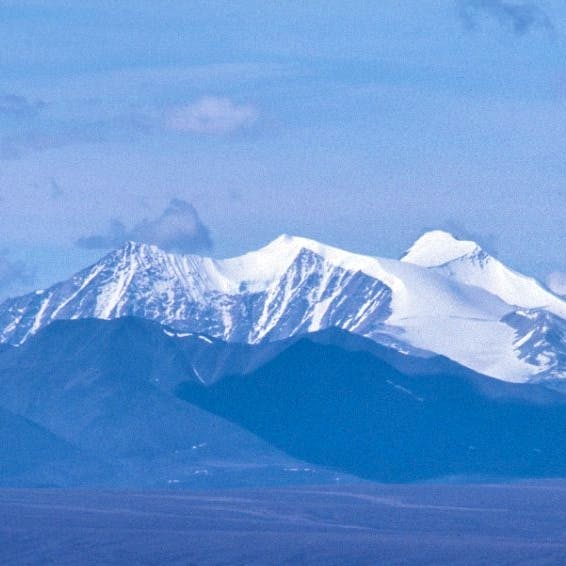Poplar, Mont. – One hundred and thirty-eight wild Yellowstone bison, free of cattle genes, will reclaim their historic home on the Great Plains starting today when they are released into Fort Peck Indian Reservation’s cultural buffalo reserve. These bison will augment Fort Peck’s existing herd of bison previously relocated from Yellowstone to the Reservation in 2012. With this transfer, the Assiniboine and Sioux Tribes of Fort Peck will manage almost 200 genetically pure bison, the largest Yellowstone bison conservation herd in the state of Montana, outside of the park. Going forward, Fort Peck intends to use these bison to seed new conservation herds across the West.
“I’m so proud of the role the Fort Peck Tribes have played in bringing buffalo back,” said Robert Magnan, director of the Fort Peck Tribes’ Fish and Game Department and the buffalo program. “In the two years since we welcomed back the first Yellowstone buffalo, we’ve seen the ecosystem revive. Grassland birds have returned, native grasses are thriving. We welcome and look forward to the buffalo’s continued benefits to our tribal lands, as well as our culture.”
Yellowstone bison are the true descendants of the massive wild herds, totaling up to 30 million, which roamed the West over a century ago. By the late 1890s, only 1,000 bison remained in North America, and most of these animals were held on private ranches and carried traces of breeding experiments with cattle. Fewer than 25 wild bison remained in Yellowstone by 1902 – reduced by illegal hunting from fewer than 200 in the 1890s. Today, Yellowstone’s bison population is the largest wild herd in the nation, as well as one of the few herds free of cattle genes. This unique combination of genetics and lack of domestication sets the Yellowstone bison apart from other contemporary herds.
In 2005, Montana Department of Fish, Wildlife and Parks (MFWP) launched an experimental quarantine study using some Yellowstone bison to assess the feasibility of securing and subsequently providing brucellosis-free bison to seed new conservation herds across the West. Media executive and philanthropist Ted Turner volunteered to care for the bison on his private ranch through a legally required additional five-year surveillance period. The animals transferred from Ted Turner’s Green Ranch to Fort Peck today are the first “graduates” of the 2005 program, and have undergone over a decade of multigenerational brucellosis testing.
The Fort Peck Tribes, InterTribal Buffalo Council, Defenders of Wildlife, National Wildlife Federation, World Wildlife Fund and many others have all been long-time proponents of restoring disease-free, wild Yellowstone bison to the Great Plains, the heart of their historic range. The groups will continue to advocate in the state legislature and elsewhere for continued restoration of Yellowstone bison to tribal and public protected areas to establish or augment conservation herds. To ensure these 139 bison are returned to their historic home, these groups have contributed to the costs for fencing, additional grazing allotments for bison, and transportation.
Defenders of Wildlife, National Wildlife Federation, World Wildlife Fund, and InterTribal Buffalo Council issued the statements below:
“Yellowstone bison are essential to the restoration of the species,” said Jonathan Proctor, director of Defenders of Wildlife’s Rockies and Plains Program. “The Fort Peck Tribes gave Yellowstone bison a home before any others would. It is their commitment that resulted in today’s bison return, and it is their vision that will open the door for wild bison restoration elsewhere.”
“With the relocation of 138 bison to the Fort Peck Tribes, we have taken yet another positive step forward in bringing bison back to western landscapes,” said Garrit Voggesser, NWF's tribal partnerships director. “Doubters have become believers, opponents have become supporters. People now recognize that Tribes are leading the way forward in wild bison conservation.”
“Fort Peck Tribes have demonstrated clear leadership in bringing bison home to the Great Plains. This is a monumental step in realizing their vision of restoring the relationship between their people and bison,” said Dennis Jorgensen, WWF’s Bison Initiative Coordinator. “WWF sees unique value in supporting efforts to build thriving Tribal communities in the Plains through the restoration of bison and the bison economy.”
“The return of these buffalo from Yellowstone National Park to Tribal lands shows the commitment Tribes have to restore buffalo to their homelands and the drive to make things that seem impossible, possible,” said Jim Stone, executive director of InterTribal Buffalo Council. “ITBC is proud to be a partner in this effort and will continue to follow or mission statement to restore buffalo to Tribal lands for cultural purposes.”
NOTE TO MEDIA: Defenders of Wildlife is filming the bison release and will upload b-roll video clips to the following URL for use by media:
https://www.dropbox.com/sh/xq9h2jhk0di87zh/AABtO0i4qnKBymP_5pTAQj4Na?dl=0
###
Defenders of Wildlife is dedicated to the protection of all native animals and plants in their natural communities. With more than 1 million members and activists, Defenders of Wildlife is a leading advocate for innovative solutions to safeguard our wildlife heritage for generations to come. For more information, visit www.defenders.org.
For over 75 years, Defenders of Wildlife has remained dedicated to protecting all native animals and plants in their natural communities. With a nationwide network of nearly 2.1 million members and activists, Defenders of Wildlife is a leading advocate for innovative solutions to safeguard our wildlife for generations to come. To learn more, please visit https://defenders.org/newsroom or follow us on X @Defenders.
News

Defenders Slams Trump Interior Pick Burgum

